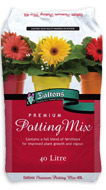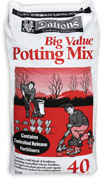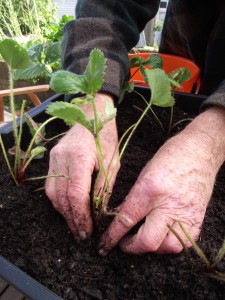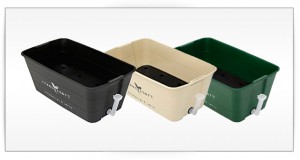Potting mix in garden pots
Potting mix. We often get asked why we recommend using potting mix instead of regular soil or compost in garden pots. The answer is that we strongly prefer potting mix.
The next question is which is the best potting mix? It’s confusing when you go into a garden centre because you are faced with many different brands of potting mix, specialist types, composts, mulches. We use Dalton’s brand potting mix because we think that it suits our products. They appear to have a thorough testing program, the product is consistent, they have got national distribution and are competitively priced. http://www.daltons.co.nz/home-gardening
http://www.daltons.co.nz/images/stories/pdfs/specifications/Retail s15 big value growing.pdf
http://www.daltons.co.nz/images/stories/imgBVPottingMixBag.jpg
This article will give you some background about New Zealand potting mixes for use in garden pots.
What’s in Potting Mix?
Common components are pine bark, coconut fibre, sand, pumice, peat, perlite, vermiculite, recycled mushroom compost, slow release fertilisers, limestone and wetting agents. The potting mix is sterilised to kill any weeds or plant –borne diseases.
What makes a good potting mix?
- It needs to have good water holding capacity.
- Good porosity so that there is sufficient air around the roots to provide for root growth. Perlite and vermiculite are both made from volcanic rocks. They provide aeration and water holding capacity.
- Plants need to be supported so the potting mix needs to provide anchorage in windy conditions.
- Produced from sustainable and renewable sources.
Do you need to add fertiliser?
We recommend adding additional fertiliser before planting and liquid fertiliser during periods of heavy flowering and fruiting. Most vegetables and herbs growing in pots are drawing a lot of nutrients out of the potting mix.
Can the potting mix be re-used?
Potting mix used in a self-watering pot for growing can be recycled 5-6 times as a growing medium after each harvest. Ie it costs less than $2/growing season. Tip the old potting mix out, turn it over to aerate it and remove any old roots. Give the pot a good clean and return the used potting mix to the pot with fresh fertiliser. The same vegetables should not be grown in the same potting mix. Continuous cropping with the same type of vegetable may lead to unbalanced and depleted level of soil nutrients. All plants need a balance of nutrients; the need for certain elements in different plants varies from one another. Vegetables grow better in soil, which has been used for a completely different crop; therefore crop rotation is the answer.
Legionella contamination
Legionella bacteria is a naturally occurring soil bacteria. There is a small risk of contracting Legionnaires disease from handling potting mix. It normally develops 2-14 days after exposure to Legionella bacteria. Go to this website for further details. http://www.ngina.com.au/Folder?Action=View%20File&Folder_id=81&File=LegionellaMemb
The Canterbury DHB published the following recommendations after the death of a Christchurch gardener from Legionnaire’s disease in 2011:
- Open potting mix bags carefully with scissors, rather than ripping open the bags.
- Wear a disposable face mask and gloves. Open the bag away from your face.
- Do your potting in a well ventilated outside area.
- Dampen down the potting mix with a little water to avoid breathing airborne dust.
- Wash your hands thoroughly after handling potting mix.
Smokers should also take care to wash their hands after handling potting mix and before lighting up as there is risk of bacteria being transferred from fingers to mouth to lungs.



